

Simons Summer Research Program 2022 Application Essay Guide
Deadline: February 18, 2022
Fee: Free excluding dining costs
All text boxes accept up to 700 characters, which is approximately 100 to 180 words.
Why do you want to participate in the Simons Summer Research Program ?
Be specific about your aspirations and goals for the upcoming summer. Tell us which Simons faculty mentors/research groups (from the 2022 Simons Program Mentor List ) are of most interest to you.
This is a straightforward question, and hopefully, you already have an idea of what you’d like to say. As the instructions recommend, specificity is key here. Think about what you hope to take away from the experience and how it will help you get closer to achieving your dreams. Take your time reviewing the Mentor List and don’t be afraid to Google someone or something you’re not familiar with.
What are your long-term academic and career aspirations/goals?
Now that you’ve addressed why you want to participate in the Simons Summer Research Program, it’s time to explore the goals you hinted at in your previous response. Don’t try too hard to impress the person reviewing your application, but instead be honest about your vision. If you don’t have specific goals in mind, you can share what kind of impact you want to have on your community, or even the world.
How do you spend your time outside of class?
Please briefly describe your 3 most significant interests/activities, including any employment or volunteer experience.
When thinking about “significant” interests, consider which of your extracurricular activities you have invested the most time in and which are most meaningful to you. If you can connect one or two of these interests to your academic goals or research ambitions, by all means do so, but keep in mind that work and volunteer experiences can teach skills, like empathy and cultural context, that are difficult to learn in an academic setting, and they are just as valuable.
What problem or project have you tackled recently?
Give a specific example that best conveys your problem-solving skills or talents. You may describe problem-solving experiences outside research/ science.
With this question, the people reviewing your application want to get a better sense of how your brain works. Walk your reader through the problem, the brainstorming process, and finding the solution. The problem or project you choose to address is not as important as your summary of the steps you took to solve it, so be sure to spend most of the characters at your disposal describing your thought process.
Briefly summarize any previous research experience (if applicable).
Please include research-oriented courses you may have taken. Tell us about any computer/mechanical skills you have that may be helpful in a laboratory setting. Be specific about the nature of your research experience(s) and your responsibilities.
If you have not had any research experience, you can skip this question. If you have, however, in any capacity, this is the time to share your experiences and takeaways. Since you don’t have a lot of room to work with, we encourage you to write down everything that comes to mind, then trim and cut your response until it’s within the character limit.
What scientific discovery or technological advance in the past year or two did you find especially interesting and/or significant? How did you find out about it and why do you think it is significant?
This is another opportunity for the person reviewing your application to catch a glimpse into your brain. What interests you? Why? How do you pursue knowledge? And what do you deem important? There are no wrong answers, only the opportunity to reveal new information about yourself and your values.
Within the broad discipline in which you propose to do research (biology, chemistry, physics, etc.), what question(s) or problem(s) regarding the physical and/or natural world are you most interested in, or would you most like to see answered?
Close out the writing section of your application with some flair by addressing the big questions. What answers do you hope to find through your research? What problems would you like to solve? What elements of the world are most interesting to you? What keeps you up at night? The options are limitless, so hone in on your particular inclinations and you’ll be on the right track.
About Kat Stubing
View all posts by Kat Stubing »
We have more guides!
Written by Kat Stubing
Category: Uncategorized
Tags: simons , summer program

Want free stuff?
We thought so. Sign up for free instructional videos, guides, worksheets and more!

One-On-One Advising
Common App Essay Prompt Guide

Supplemental Essay Prompt Guide
- YouTube Tutorials
- Our Approach & Team
- Undergraduate Testimonials
- Postgraduate Testimonials
- Where Our Students Get In
- CEA Gives Back
- Undergraduate Admissions
- Graduate Admissions
- Private School Admissions
- International Student Admissions
- Common App Essay Guide
- Supplemental Essay Guides
- Coalition App Guide
- The CEA Podcast
- Admissions Stats
- Notification Trackers
- Deadline Databases
- College Essay Examples
- Academy and Worksheets
- Waitlist Guides
- Get Started
You are using an outdated browser. Please upgrade your browser to improve your experience. Thanks!

- Application Guidelines
- Recommendations
- Recent Announcements
- Science Talent Search (STS)
- Siemens Competition
- HS Research Opportunities
How to Apply
Dates of Program: JUNE 27 - JULY 29, 2022
For summer 2022, the Simons Summer Research Program will offer TWO options/ tracks for participation:
2) IN-PERSON (COMMUTER)
All programming (e.g. faculty talks, closing symposium) will be conducted in a virtual format.
*Residential campus housing will NOT be available to Simons program participants (summer 2022).
Students admitted for the IN-PERSON (COMMUTER) option will be required to provide documentation of vaccination status (both COVID vaccine and booster required) before engaging in on-campus work and must follow all University COVID policies. Further details will be provided to accepted students at a later date.
All participants in the Simons program (summer '22) in BOTH REMOTE and IN-PERSON (COMMUTER) should expect to commit a minimum of 4 hours per day working remotely on their own and/or with their mentor/research group. Hours may vary and should be agreed upon by consultation with the assigned faculty mentor.
Guide to applying:
- ELIGIBILITY REQUIREMENTS All applicants must currently be in their junior year (11th grade) of high school at the time of applying; must be US citizens and/or permanent residents; and must be at least 16 years of age by the start of the program. (no exceptions to these rules)
All participants in the Simons program (summer '22) in BOTH REMOTE and IN-PERSON (COMMUTER) should expect to commit a minimum of 4 hours per day working remotely on their own and/or with their mentor/research group. Hours may vary and should be agreed upon by consultation with the assigned faculty mentor. Students admitted for the IN-PERSON (COMMUTER) option will be required to provide documentation of vaccination status (both COVID vaccine and booster required) before engaging in on-campus work and must follow all University COVID policies (which may include proof of a negative test prior to the start date, surveillance testing, masking, etc.); and must be housed/provide proof of residing with a legal responsible adult (family member, guardian over the age of 18) for the duration of the program. Further details will be provided to accepted students at a later date; vaccine documentation is not required at time of application submission. If an applicant is offered admission to work on an IN-PERSON (COMMUTER) track, the program will require further proof of insurance, waivers regarding liability, permission for use of photographs, etc. from the applicant and their guardian.
NOMINATION REQUIREMENTS: Interested eligible applicants should seek nomination from their high school. The designated school nominator/official (typically a science research coordinator/director, guidance counselor or other appropriate contact in the high school) may have additional guidelines/processes for selecting the student nominees from the school. We strongly suggest and recommend that only one official at each school (for ex., one science teacher, or guidance counselor) be responsible for nominating students to ensure there are no more than 2 nominees per school (more than 2 nominees will result in the disqualification of all applicants).
If you are not certain of the school official/contact handling nominations for your high school (usually a School Research Coordinator, Science Teacher, Guidance Officer), please view our database of high school contacts below:
LINK: HIGH SCHOOL NOMINATION CONTACT LIST - SIMONS SRP
Should the listings on the above database need to be modified, please have the newly desginated HIGH SCHOOL OFFICIAL contact us at [email protected] with their information (full name, position, contact information & school name/address) so we may update our directory.
Schools not represented on this list have likely not previously nominated applicants for the Simons SSRP. If an individual school is not listed on our database and would like to nominate a student, the school official whom will be coordinating the nomination process should complete the nomination form. We can then add the school/representative to our directory as the main contact for future years. *We strongly encourage all school nominations to be submitted by February 11th if possible.
Before completing the online application, please confirm with your nominating high school official that you are one of your school's designated nominees for this year's program. Email notifications are NOT sent to nominated students, so please check with your designated high school official to confirm your nomination . All high school nominators will receive an automated confirmation email acknowlegdging their submission after completing the online nomination form. Once confirming with your high school nominator, applicants may begin the online application - which can be found on the FORMS page. Applicants should be prepared to upload a transcript/grade report (PDF) (unofficial is acceptable) at the time of submission.
Application deadline: FEBRUARY 18, 2022 (11:59 PM EST)
Applicants are responsible for obtaining recommendation letters from 2 teachers (math/science preferred) from their high school and should follow up to ensure that their letters are submitted. The link to submit letters of recommendation can be found on the FORMS page.
Letter of Recommendation deadline: FEBRUARY 18, 2022 (11:59 PM EST)
Note: Letters from any previous research supervisors (if applicable) are encouraged. An additional letter of recommendation (optional) from a previous faculty research mentor/laboratory supervisor may be submitted by email directly to [email protected]
Applicants will be asked and required to select their top three (3) choices of preferred mentor/areas of research interest on the online aplication. Unfortunately, we are unable to make any substitutions. To view the listing of faculty research mentors available for summer '22 (either remotely or in-person), please visit the link below:
If the transcript submitted with your application does not contain grades for fall 2021, p lease follow-up with an updated transcript as soon as available to [email protected] . Additionally, should you receive any contingent offers to work in a particular research laboratory (if accepted into the program), please forward any faculty correspondence to [email protected] .
Other than these specifics, please do not attempt to submit or send any other supplementary materials (resume, test scores, research publications) that are not requested.
The Simons Summer Research Program is a national, competitive summer research program for 11th grade students. Prior research experience is not a prerequisite for the program.
Applicants must indicate a preferred mentor/area of research interest for summer 2022. Additional admissions procedures (including interviews, by telephone or in person) may be required for placement within certain research groups/labs. Note that obtaining an interview is not an indication of acceptance into the Simons program, and the program receives far more applications from qualified students than can be accommodated.
February 1, 2022 - forms available (application, letter of recommendation, school nomination form and list of available faculty mentors)
February 11, 2022 - preferred deadline for school nominations (nomination form will still remain active until February 18)
February 18, 2022 - deadline for all application materials (completed application and letter of recommendations)
March 1, 2022 - application acknowledgement confirmation sent to all applicants whom have submitted a complete application
early April 2022 - notification of admissions decision to applicants (via email)
*Applicants who have submitted a completed application package can expect to receive a confirmation email acknowledging receipt of these materials by March 1st.
Due to the large volume of applications received for this program, late submissions/materials are not considered/accepted.
Percentage of students admitted: about 8%
Please note that admissions into the Simons program is highly selective and we receive far more applications from qualified students than we can accommodate.
So we can respond to all inquiries in a timely and efficient manner, please contact us via email at [email protected] if possible.

Berkeley² Academy
Test Prep | Tutoring | College Admissions
- Stephanie Savicki
- Jan 22, 2019
- 11 min read
Essay Strategies for 2019 Pre-College Summer Programs

Last week , we told you about the best 2019 pre-college programs for high schoolers. Did a few options seem like a fit for you and your goals? Awesome! Let’s talk about applying.
Once you’ve narrowed down the programs, it’s time to review the requirements and application materials. Other than grades, test scores, and recommendations, a key part of applicant assessment and review is the application essay.
While plenty of applicants have the credentials, essays are a valuable tool that will help set you apart from the pack by illustrating not only your seriousness about the opportunity, but your fit with the program. Program coordinators want to attract students who will thrive in the research and/or internship environment, and who will go on to become impressive alumni who will ultimately prove a solid investment and exemplar of the program’s success.
Through the essays you write, you’ll want to convey not just why you find the program attractive, but how you’ll benefit, learn, and grow from the opportunity. Are there faculty members you’re particularly excited to work with? Are there research areas you can’t wait to contribute to and explore? How will this program enrich your leadership capabilities?
In addition, some of the applications also ask for what we refer to as “character” essays: those that showcase one of your defining qualities. How do you demonstrate leadership in your life? What does it mean to you to be a leader? Which service experiences have meant the most to you? How have you served as an example for others? How did you navigate and overcome a significant challenge?
Finally, a few applications also feature “issue” essays: How does socioeconomic status interact with educational opportunity? Why do you feel diversity is integral to business? What modern issue needs the most scientific attention and resources?
Below are the available essay prompts along with some tips for crafting responses to each of the open applications featured in last week’s post . Note: Some applications are not repeated this week because the deadline has passed!
Texas Tech - Clark Scholars Program
DEADLINE: 2/22/2019
Essays: Two 500-word essays
Research Rationale: Describe your primary interest, being very specific; this will help with matching you to a research professor. (Optional - describe your secondary interest, being very specific.)
Narrative: Tell the Selection Committee about yourself and your reasons for applying to the Clark Scholarship Program. Please include your future goals and how becoming a Clark Scholar would contribute to achieving those goals.
“The [narrative essay] is how the program will benefit them. The other… is about their research and what they want to pursue and why. If students have done research, we hope that they will take some time to reflect on their research in these prompts.” – Dr. Michael San Francisco, a professor and dean of the Honors College at Texas Tech University
As we mentioned, articulating your fit with the program, including the research you’re most interested in and keen to participate in, as well as how the program fits with your professional goals will be paramount to your success as an applicant.
NASA & University of Texas at Austin - Summer Intern Program
DEADLINE: 3/1/2019
ESSAYS: One 250-word (maximum) essay
Prompt: Describe yourself and discuss each of the following as part of your essay. You are not limited to these areas.
Important academic or life experiences in STEM (science, technology, engineering, math)
Extracurricular activities that have influenced you in a positive way (include skills you deem valuable for an academic team research setting)
Your current academic path and career plans
How your experience in this program will impact your plans for the future
Share your prior experience in STEM opportunities.
How did you hear about the SEES Internship Program?
The subjects that most interest me are:
Which of the following does your school offer?
Science AP classes
Computer Science coding (and which language[s])
Dual credit
My participation in SEES depends on my receiving a travel scholarship
This is not a lot of space for very much information, so the best choice is to figure out how these topics interrelate for you and break it down into 2-3 meaningful paragraphs.
For example, your topics could flow as follows: How did you get into and realize your love for STEM? What activities did you engage in? What opportunities were available to you (and which did you take advantage of)? How has this set you on your current academic path and passions? What are your future plans and how are you currently working towards them? How did you hear about the program and how will it help your goals?
Carnegie Mellon University (CMU) - SAMS Program
DEADLINE: Rolling basis started 1/3/2019
ESSAYS: Five 300-word (minimum) essays
Identify and reflect on an issue affecting your community. In what way(s) might a STEM-related discipline improve the issue you've identified?
How has culture and family background influenced the way you see the world?
Tell us about a significant challenge you've encountered and how you've overcome it. What values and skills did you learn in the process?
Please discuss how and why you became interested in STEM. In what way(s) is your interest in STEM supported in your high school?
How would attending the Summer Academy for Math and Science at Carnegie Mellon University support your academic and career goals? How would you contribute to the success of the program?
In addition to the latter prompts which reflect on program fit (see aforementioned tips), this application also includes character and issue essays. This is your chance to articulate how you applied your passion and what will be the impact of your future work, as well as help the admissions committee understand you more fully as a person. Think about the characteristics you want to portray (Hint: check out the program or university’s mission statement and goals) and showcase them through your essays.
For example, for the first prompt, you’ll want to illustrate your empathy and your ingenuity. What problems have you noticed in your community and how could work in your field alleviate them? For the second and third, think carefully about the qualities you want to highlight and how to best create a narrative to communicate them. What value did your parents exemplify for you that has shaped how you see the world and, more specifically, how to solve problems? How did you use a CMU-valued trait, such as creativity, to conquer an obstacle? Decide on your message, then tell your story. Each response should have a thesis (which I try to help my students conceptualize as a one-sentence direct answer to the prompt) that the essay states and supports.
Stony Brook University - Simons Summer Research Program
DEADLINE: 1/23/2019
ESSAYS: Requires five 90-word (maximum) short responses and two 250-word (maximum) essays.
Short response prompts:
Why do you want to participate in the Simons Summer Research Program? Be specific about your aspirations and goals for the upcoming summer. Tell us what previous Simons faculty mentors/research groups are of most interest to you.
What are your long-term academic and career aspirations/goals?
How do you spend your time outside of class? Please briefly describe your 3 most significant interests/activities, including any employment or volunteer experience.
What problem or project have you tackled recently? Give a specific example that best conveys your problem-solving skills or talents. You may describe problem-solving experiences outside research/ science.
Briefly summarize any previous research experience (if applicable). Please include research-oriented courses you may have taken. Tell us about any computer/mechanical skills you have that may be helpful in a laboratory setting. Be specific about the nature of your research experience(s) and your responsibilities. If you have already begun working with a Stony Brook faculty mentor and made arrangements to continue a research project for next summer, please describe what have you accomplished to date/what you hope to accomplish in summer 2019.
Essay prompts:
What scientific discovery or technological advance in the past year or two did you find especially interesting and/or significant? How did you find out about it and why do you think it is significant?
Within the broad discipline in which you propose to do research (biology, chemistry, physics, etc.), what question(s) or problem(s) regarding the physical and/or natural world are you most interested in, or would you most like to see answered?
Luckily, the shorter essay prompts make clear what SBU wants from you and are relatively straight forward. The two longer parts are both character essays: they want you to show specific qualities in yourself, namely intellectual curiosity. This is where you can showcase your passion as well as your background knowledge and analytical thinking.
MIT - MITES Program
DEADLINE: 2/1/2019
Essays: Five required and one optional 300-word (maximum) essays
What are some career goals you have for yourself at the moment? How might the OEOP summer programs help you attain these goals?
What are you passionate about? How have you spent time developing this passion?
There are many parts that make us individuals. How has a specific part of your identity (race, culture, first generation college student, gender, etc) impacted your academic development or shaped your academic aspirations?
Please describe a significant challenge you have faced and how you overcame it. (This challenge can be personal, academic, or social).
If you could develop, invent, or innovate anything to change the world for the better or improve the lives of others, what would it be, and why?
(OPTIONAL) Is there any other information you would like to share with us that is not presented elsewhere in your application?
Funnily, the MIT summer program application is much more essay heavy than the MIT college application! However, this app will be great practice for other university apps. All of these prompts are similar to previously discussed topics, so scroll up!
After you’ve drafted and polished responses to the five required essays, think about which qualities and information each is conveying. Is there anything else key about you that the admissions committee should know? That’s what the sixth essay is for! Think about things like leadership, service, relevant experience, creativity, empathy, tenacity, flexibility, and independence in learning. Again, review the program’s mission statement and review all of the program details to get a solid feel for what they’re looking for in an applicant.
University of Pennsylvania - Wharton’s Leadership in Business World
ESSAYS: One required 450-word (maximum) essay and one optional 300- to 400-word essay
Required: Describe the most important relationship in your life. What is your contribution to this relationship?
Optional: Why do you want to attend LBW?
For the first prompt, you want to go into it with a value in mind. What characteristic, trait, or moral are you valuing by highlighting this person and your relationship? How are you showing how you contribute meaningfully to the relationship? Once you’ve answered these questions, see how you can show (not tell!) these answers through your description and story.
For the second—which you should absolutely do!—follow the previous instructions for similar essays about fit with a given program.
Yale University - Young Global Scholars
DEADLINE: 2/6/2019
ESSAYS: One 500-word and two 200-word essays
Write about an example of social inequality. What do you see as a primary cause of this inequality? (500 words)
What is a topic that you find fascinating and are interested in exploring? (200 words)
We want to learn more about your background, beliefs, values, and/or the important people in your life. Please tell us about something that has influenced you and articulate how it has shaped you. (200 words)
Instead of “fit” essays, we have character/issue essays. However, you can work fit into the second essay easily. Your topic should be relevant to something you can explore or pursue at YGS.
The first essay should be more issue focused, highlighting your incisive ability to analyze and think critically as well as empathetically. This is the largest and most important essay. Consult with YGS website to familiarize yourself with the program’s values and mission statement.
The final essay is a character essay, meant to showcase a quality of yours that will show your depth and meaningful growth as a student and person. However, it is the briefest essay, so you’ll want to be direct. Hone in on a thesis and one to two supporting examples.
Boston University - RISE Program
DEADLINE: 2/14/2019
ESSAYS: Three essays ranging from 200 to 300 words
Why you selected your field of interest and what you would like to research (300 words)
Your background (250 words)
Why you want to attend the RISE program (200 words)
These three essays are similar to those we’ve previously discussed. The first and third are all about establishing fit: you with the program AND the program with you. The second, while lacking guidance, is meant for you to articulate how you’ve overcome challenges and taken advantage of opportunities. What support have you had? Have your passions been encouraged? Again, think about what message you want to send to the admissions committee here.
Stanford University - Stanford Institutes of Summer Medical Research Program
DEADLINE: 2/23/2019
ESSAYS: Two 3500-character (maximum; ~500 words) essays
What are your reasons for applying to SIMR? Please summarize the reasons that you are applying for the SIMR Program, how your participation in the program fits into your future educational and career objectives, and why you feel you are a good candidate for the program. You may also discuss your institute/area of research preferences and personal goals.
Please respond to one of the following prompts (a OR b)
At Stanford, we are committed to increasing the diversity (broadly defined) of students in the sciences and engineering. Please describe how your interests and background (in terms of culture, class, race, gender, ethnicity, work, hardships that you’ve faced or life experiences) would contribute to that diversity.
Please describe a high school extracurricular activity or internship/work experience that has had a significant impact on you. We are particularly interested in hearing about how this experience shaped your character and what lessons you brought away from it.
The first prompt is a classic “fit” essay. Follow their guidance and be sure to expand on your answers with supporting details. This essay is meant to be up to 500 words, so break it down into smaller pieces if you’re struggling with length. Write 150 words about why you’re interested in the program and research opportunities, 150 about your relevant educational and career goals, and 150 about your fitness as a candidate. Of course, make sure these all tie together cohesively.
For the second essay, think about which prompt would be most advantageous for you to answer. Have you overcome hardships or lack of opportunities due to your background? How have you sought out and fought for your education? What does participating in this program mean to you? How will you contribute to representation in your field and how would that inspire others in the future? If you don’t feel like that prompt is right for you, or you feel like you have a relevant and meaningful experience to share, answer the second option. How did this opportunity change you and your goals? How did it stimulate your intellectual curiosity? Did it cement anything for you or set you on your current trajectory? Does this program tie in with continuing that momentum?
National Institute of Health (US. Dept. Health and Human Services) - Biomedical Research HS Summer Program
ESSAY: A cover letter describing the applicant's research interests and career goals
Helpful advice from the NIH website:
Your cover letter is your opportunity to “speak” persuasively to those who read your application.
Scientists are busy people. Keep your cover letter brief, focused, and succinct; it should be no longer than two pages. Say what is important, but nothing more.
Tailor your cover letter to the particular application you are completing. Why do you want to participate in this specific program? How do your skills and experiences make you the perfect match for the program? Show that you have done your homework.
Tell us how this program will help you prepare for a science- or health-related career. How has your unique life experience shaped your goals for the future? Write about hardships that you have had to overcome and challenges you see yourself facing in the future.
Pay particular attention to the way in which you describe your research interests. Institute and Center Selection Committees will review applications. It is likely that many of them will search the application database for individuals with whom they share an interest. If you are willing to work on several areas, it might be useful to mention them all specifically to increase your chances of a “match.”
How have you been a leader at your school and in your community? Write about how these and other experiences show your leadership potential. Help us understand your commitment to continued self-improvement and learning.
Do not present material that is included in your resume except perhaps to highlight your major accomplishments.
Be specific. Remember that examples, stories, and details are likely to stick with the reader. It is better to provide an example that illustrates your ability to work in a team than to state that you are a team player.
Following the NIH’s tips will be the most helpful here. Again, reiterating your fit with the program (both what you are bringing with your experience and background as well as how the program will enrich your understanding and further your career and educational goals) is key.
If you want even more tips and advice from B2A, you can meet with one of our Essay Specialists or College Admissions Counselors for individual guidance or feedback on your essays and applications! College Admissions Counselors are available for 1:1 meetings as well as through our STEPS and Gateway packages.
Featured Posts

Declining Acceptance Rates for the Class of 2028

Junior Year Checklist: How to Prepare for Senior Year and College Applications

The Return of Required Testing and What it Means for You

Why the Digital SAT Proved Tougher Than Expected

The Ultimate Guide to Conquering AP/IB Exams

Waitlisted? What To Do Next

Carnegie Mellon University: Home of the Curious and Passionate

Your Network is Your Net Worth: 6 Tips to Help Grow Your Network

Big Changes at UT Austin: Testing Policies, Essays, and Deadlines

Artificial Intelligence and Admissions
Recent Posts

Search By Tags
Upcoming Summer 2024 Application Deadline is May 12, 2024.
Click here to apply.

Featured Posts

10 Free Summer Programs for Middle School Students

10 Computer Science Courses for High School Students

10 Prestigious Business Competitions for High School Students

8 Machine Learning (ML) Internships for High School Students

9 Productive Things to do Over the Summer as a High School Student

8 Pharmacy Internships for High School Students

10 Coding Internships for High School Students

Sally Ride Science Academy - 8 Reasons Why It's Worth It

10 Ways to get a High School Business Education

10 of the Best Engineering Projects for Middle School Students
7 Reasons Why You Should Apply For The Simons Summer Research Program
Do you want to gain greater hands-on experience in science, math, or engineering? Are you looking to get research experience over the summer? Are you open to getting a taste of university life?
If your answer is “yes”, then the Simons Summer Research Program may be for you! First established in 1984, it is well renowned for its excellent programming and will provide a valuable junior-year summer experience. If you are interested in Stony Brook University, you will also be likely to continue studying there if you participate in this summer program.
Eligibility
Applicants must currently be in their junior year (11th grade) of high school at the time of applying; must be US citizens and/or permanent residents; and must be at least 16 years of age by the start of the program. Those interested in science who have demonstrated independence, creativity, and an aptitude for doing hands-on work.
Application Process and Timelines
First, you would need a nomination from your school in order to apply. The process itself will depend on what your school does, such as having a lottery, first-come/ first-serve, and pre-application in choosing two (2) designated nominees. Notably, schools that exceed the two-student nomination limit will all be disqualified.
Next, when receiving the nomination, you can curate your application, which will include the online application component, transcript, two letters of recommendation from teachers (math/science preferred), and school nomination from a high school official. Applicants who have prior research experience may have a faculty mentor submit an additional letter of support (optional) sent to [email protected].
Test scores, resumes, and awards that are not requested in the application will not be accepted.
All of these materials will need to be sent by the deadline in early February by 11:59 pm . This is a hard deadline, which means if your application is not fully completed by then, it will not be received!
8 Reasons to Apply for the Simons Summer Research Program
With basic information being established, here is a list of reasons why you should apply.
1. The program is prestigious.
The Simons Summer Research Program is highly regarded, and the selection process reflects it. Although previous experience is not required, t he application is time-intensive, and requires essays, and a school nomination. Those who have exhibited strong passion and involvement in STEM are likely to be selected for the program, and the acceptance rate is around 12%.
Therefore, if you are accepted into the program, colleges, and scholarships will value your merit, and the prestige of the program will follow you beyond the summer.
2. Exposure to cutting-edge research.
For the duration of the program, students will learn how to conduct scientific research , effectively communicate mathematics and computational science principles , and will gain an improved understanding of how they can pursue a career in applied mathematics and computational science . Not only will they participate in the research process from start to finish, but they have an opportunity to present their work via a written research abstract and research project.
3. An opportunity to work with distinguished faculty.
If undertaking a research project seems daunting, don’t worry – Simons Fellows are matched with Stony Brook faculty mentors. These faculty mentors will have had years of professional experience in the field of their expertise. Mentors will be selected to work closely with the student participants , which is a great networking opportunity.
The program provides a list of mentors who will be available for the 2023 summer program. Take a look at the different research fields and projects that they are involved in – chances are, you’ll find something that sparks your interest.
4. Opportunities to skill yourself in research and beyond.
Participants are not just expected to be researching over the summer. The program holds community and career-driven events as a high priority, so there will be weekly faculty research talks and participate in special workshops, tours, and events. These events will provide great insight into the industry as a whole while providing attendees with an opportunity to network and find connections.
5. There are no tuition fees.
Accepted students will not pay for any tuition-related expenses or fees , which may make it significantly affordable for students and parents.
However, the program is not entirely free in all aspects; participants are responsible for their own transportation, dining costs, or residential costs. Those who commute are not expected to pay for housing for the seven weeks of the program.
6. A taste of college life.
Housing is provided as an option for the program, which means that if you take the opportunity, you will experience what it’s like to dorm on campus. Typically, you are assigned to a double room in a university residence hall. This may be especially exciting for students who have not previously lived far away from home before.
Campus dining is also offered; students who choose this option will be provided a meal card/declining balance plan rather than a specific $ amount per meal. The menu may include pizza slices, wraps, salad bars, burgers, yogurt, cereal, soup, and more.
7. Networking and forming lifelong relationships with like-minded, passionate individuals.
The community base of the Simons Summer Research program will be filled with those who are interested and engaged in STEM, so you are bound to become involved in a great network of alumni. The experience of this program will stick long after you leave, so it’s likely that you will be close with everyone who has participated in this program. Research is rarely a one-person project, so you may find people who will support you in your endeavors.
A list of past alumni is available on the website , along with the names of past research mentors that they have worked with.
8. Major help for other science competitions.
The research that program participants have pursued with their mentors can provide a good submission for other science-related contests. On their website, Simons Summer Research Program provides a list of alumni and their research mentor(s) and their placement in several notable research competitions like Regeneron Science Talent Search (STS) and Siemens Science Competition . If you want to further your accolades beyond summer research, the Simons Summer Research Program is a great place to look.
If you're looking for a real-world internship that can help boost your resume while applying to college, we recommend Ladder Internships!
Ladder Internships is a selective program equipping students with virtual internship experiences at startups and nonprofits around the world!
The startups range across a variety of industries, and each student can select which field they would most love to deep dive into. This is also a great opportunity for students to explore areas they think they might be interested in, and better understand professional career opportunities in those areas.
The startups are based all across the world, with the majority being in the United States, Asia and then Europe and the UK.
The fields include technology, machine learning and AI, finance, environmental science and sustainability, business and marketing, healthcare and medicine, media and journalism and more.
You can explore all the options here on their application form . As part of their internship, each student will work on a real-world project that is of genuine need to the startup they are working with, and present their work at the end of their internship. In addition to working closely with their manager from the startup, each intern will also work with a Ladder Coach throughout their internship - the Ladder Coach serves as a second mentor and a sounding board, guiding you through the internship and helping you navigate the startup environment.
Cost : $1490 (Financial Aid Available)
Location: Remote! You can work from anywhere in the world.
Application deadline: April 16 and May 14
Program dates: 8 weeks, June to August
Eligibility: Students who can work for 10-20 hours/week, for 8-12 weeks. Open to high school students, undergraduates and gap year students!
Additionally, you can also work on independent research in AI, through Veritas AI's Fellowship Program!
Veritas AI focuses on providing high school students who are passionate about the field of AI a suitable environment to explore their interests. The programs include collaborative learning, project development, and 1-on-1 mentorship.
These programs are designed and run by Harvard graduate students and alumni and you can expect a great, fulfilling educational experience. Students are expected to have a basic understanding of Python or are recommended to complete the AI scholars program before pursuing the fellowship.
The AI Fellowship program will have students pursue their own independent AI research project. Students work on their own individual research projects over a period of 12-15 weeks and can opt to combine AI with any other field of interest. In the past, students have worked on research papers in the field of AI & medicine, AI & finance, AI & environmental science, AI & education, and more! You can find examples of previous projects here .
Location : Virtual
$1,790 for the 10-week AI Scholars program
$4,900 for the 12-15 week AI Fellowship
$4,700 for both
Need-based financial aid is available. You can apply here .
Application deadline : On a rolling basis. Applications for fall cohort have closed September 3, 2023.
Program dates : Various according to the cohort
Program selectivity : Moderately selective
Eligibility : Ambitious high school students located anywhere in the world. AI Fellowship applicants should either have completed the AI Scholars program or exhibit past experience with AI concepts or Python.
Application Requirements: Online application form, answers to a few questions pertaining to the students background & coding experience, math courses, and areas of interest.

Lumiere Research Scholar Program
If you are passionate about research then you could consider applying to the Lumiere Research Scholar Program , a selective online high school program for students to connect with researchers from prestigious universities. Last year, we had over 2100 students apply for 500 spots in the program! You can find the application form here.
Lydia is currently a sophomore at Harvard University, studying Molecular and Cellular Biology. During high school, she pursued engineering activities like attending the Governor's School of Engineering and Technology. In her spare time, she likes to create digital art while listening to music.
Image source: Simons Summer Research Program logo

From Passion to Prestige: The Simons Summer Research Program
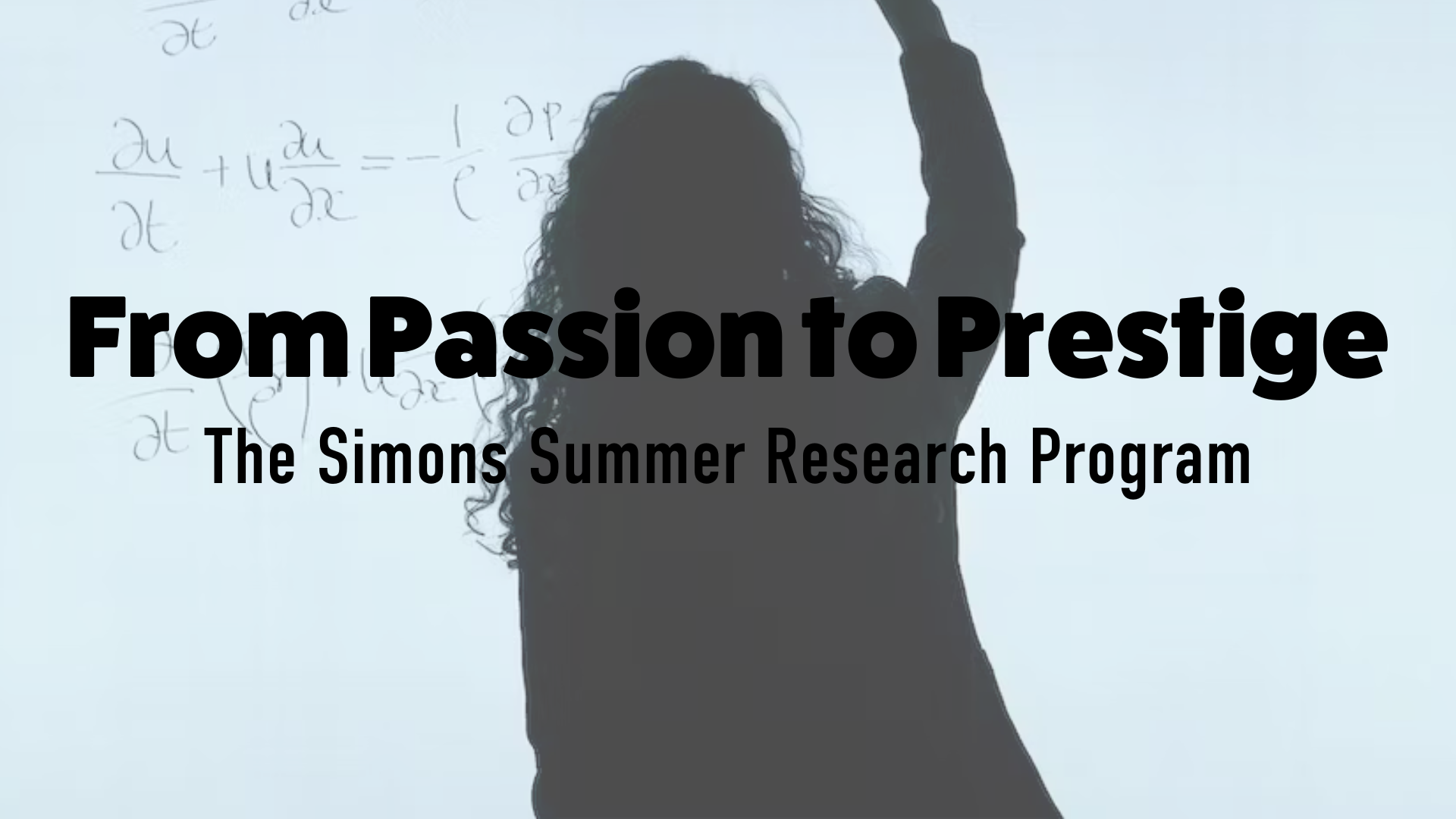
Widely recognized for its commitment to fostering talent in mathematics, engineering, and the sciences, the Simons Summer Research Program provides a learning experience that transcends traditional classroom boundaries. By offering an immersive and challenging research experience, the Simons Summer Research Program draws aspiring researchers into a world where curiosity meets rigor.
Unraveling the mysteries of science, participants not only gain invaluable insights but also form connections with leading scientists in their respective fields and get a taste of college life. Join us as we delve into the world of the Simons Summer Research Program, exploring its impact on aspiring scientists, and exploring the keys to crafting a compelling application that opens the doors to a transformative summer experience.
What is the Simons Summer Research Program?
Founded on the principles of fostering scientific curiosity and research prowess, this program has become a cornerstone for aspiring high school students seeking an immersive summer experience in STEM fields. Established by the Simons Foundation in 1984, the Simons Summer Research Program has gained international acclaim for its commitment to providing an unparalleled opportunity for hands-on research and professional development.

Each year, the Simons Summer Research Program selects a cohort of talented rising seniors to join faculty mentors at the Stony Brook University campus in Stony Brook, New York. Participants embark on a six-week journey into academic research, joining a research group or team and assuming responsibility for their project. By the end of the program, they will produce an abstract as well as a research poster to present at the final symposium.
Throughout the program, not only will students be involved with every step of the research cycle, they will be learning invaluable life and professional skills outside of the lab. Simons Summer Research Fellows will experience what it is like to live in a dorm room and eat at campus dining halls, have access to faculty talks, workshops, tours, and events, and get a chance to network with like-minded peers and distinguished faculty.
Becoming a Simons Summer Research Fellow
The Simons Summer Research Program is prestigious and competitive – and its statistics reflect that. Their average acceptance rate is around 5%. This means that you will need to submit a very strong application to be accepted, but it will be very impressive to top-tier colleges when you are. When admissions officers see that you have been accepted to a highly selective program like Simons, they will be more likely to view your application as indicative of exceptional scientific promise.
Interested in our online AI coding program for middle & high school students? Enter your email below for program enrollment, updates & more!
That being said, the Simons Summer Research Program does not require you to have any previous research experience. Instead, they will look for students with a passion for science who have demonstrated an aptitude for hands-on work, independence, and creative thinking.
To apply to be a Simons Summer Research Fellow, you must be in your junior year, a US citizen and/or permanent resident, and at least 16 years old. If you are interested, you will need to be nominated by a school official. Only two students can be nominated per year, so contact them early to express your interest. Once nominated, you will submit an online application with your transcript, faculty mentor preference, and two recommendation letters with an optional third.
While the Simons Summer Research Program does not require students to pay for tuition, it will require students to pay for residential housing, dining, and transportation costs. Students who commute, however, are not expected to pay for the services they do not use.

For the 2024 admission round, the application deadline will be Feb. 7, 2024, and the letter of recommendation deadline will be Feb. 15, 2024. If you have any questions about the program after reviewing their application guidelines, you can follow up with them at the Simons Summer Research Program email: [email protected].
Crafting a Compelling Application to the Simons Summer Research Fellowship
Participate in stem competitions and research projects.
While not required by any stretch, nothing will demonstrate a passion for science to the Simons Summer Research Program selection committee like the dedication needed to advance in competitions or see a research project through to the end. To that end, you may want to look into popular competitions like STEM Olympiads, Regeneron ISEF, or the Harvard/MIT Mathematics Tournament and pursue a few that interest you.
You will also want to try to get some research experience if you can. It can be challenging for high school students to gain research experience in a lab, but it will help your application stand out significantly if you can. You might want to reach out to your guidance counselors, STEM professors at local universities or community colleges, or local research labs to see if they need an intern or junior researcher.
Don’t Skimp on Your Grades
You will want a recommendation letter from someone who can speak to your creativity, independence, and aptitude for hands-on learning. This means that, rather than choosing your current teacher, you might pick a math or science teacher who had you complete a challenging project or helped you prepare for competitions. If you have been involved with research, ask your mentor to write your third letter. Give them ample time (6+ weeks) to write you a strong letter to the Simons Summer Research Program selection committee.
Find Strong Recommenders
Life can get busy, especially if you take the above recommendation to heart and get involved with competitions or research on top of your day-to-day activities. For some students, this means that schoolwork may go by the wayside, especially if you start to feel burnt out. But remember, while fancy accolades are not a requirement to get into the Simons Summer Research Program, good grades are. So be sure to practice good time management skills and take time for the more mundane parts of life. Learning to juggle everything is an essential skill that you will take with you throughout your life and will pay you dividends in your mental health.
If you are interested in applying to the Simons Summer Research Program, consider applying to the 1:1 Mentorship Program at InspiritAI! The intersection of AI and STEM research is fascinating and ever-growing, and our mentors – hailing from the world's top research institutions and tech companies – will walk you through an entire research project from start to end. Whether you are a coding novice or a virtuoso, our individualized mentorship program will help you develop an exceptional research project. For more information, do not hesitate to contact InspiritAI with questions.

15 Boston University High School Summer Programs
The brown pre-college program: high school ivy experience.
Home — Essay Samples — Geography & Travel — Travel and Tourism Industry — The History of Moscow City
The History of Moscow City
- Categories: Russia Travel and Tourism Industry
About this sample

Words: 614 |
Published: Feb 12, 2019
Words: 614 | Page: 1 | 4 min read

Cite this Essay
Let us write you an essay from scratch
- 450+ experts on 30 subjects ready to help
- Custom essay delivered in as few as 3 hours
Get high-quality help

Dr. Karlyna PhD
Verified writer
- Expert in: Geography & Travel

+ 120 experts online
By clicking “Check Writers’ Offers”, you agree to our terms of service and privacy policy . We’ll occasionally send you promo and account related email
No need to pay just yet!
Related Essays
13 pages / 6011 words
1 pages / 657 words
3 pages / 1208 words
6 pages / 3010 words
Remember! This is just a sample.
You can get your custom paper by one of our expert writers.
121 writers online
Still can’t find what you need?
Browse our vast selection of original essay samples, each expertly formatted and styled
Related Essays on Travel and Tourism Industry
Traveling is one of the most enriching experiences one can have. It exposes you to new cultures, customs, and ways of thinking. However, it can also be challenging and unpredictable, making it a true adventure. As a college [...]
Exploring foreign lands has always been a fascinating aspect of human curiosity. It is a desire to discover new cultures, traditions, and landscapes that are different from one's own. The experience of traveling to foreign lands [...]
Travelling is a topic that has been debated for centuries, with some arguing that it is a waste of time and money, while others believe that it is an essential part of life. In this essay, I will argue that travelling is not [...]
Traveling is an enriching experience that allows individuals to explore new cultures, meet people from different backgrounds, and broaden their perspectives. In the summer of 2019, I had the opportunity to embark on an amazing [...]
When planning a business trip all aspects and decisions rely heavily on the budget set by the company for the trip. Once Sandfords have confirmed the location careful consideration should be used to choose the travel method and [...]
4Sex Tourism in ThailandAs we enter a new millenium the post-colonial nations in the world are still searching for ways to compete in an increasingly globalized, consumption driven economic environment. Many developing countries [...]
Related Topics
By clicking “Send”, you agree to our Terms of service and Privacy statement . We will occasionally send you account related emails.
Where do you want us to send this sample?
By clicking “Continue”, you agree to our terms of service and privacy policy.
Be careful. This essay is not unique
This essay was donated by a student and is likely to have been used and submitted before
Download this Sample
Free samples may contain mistakes and not unique parts
Sorry, we could not paraphrase this essay. Our professional writers can rewrite it and get you a unique paper.
Please check your inbox.
We can write you a custom essay that will follow your exact instructions and meet the deadlines. Let's fix your grades together!
Get Your Personalized Essay in 3 Hours or Less!
We use cookies to personalyze your web-site experience. By continuing we’ll assume you board with our cookie policy .
- Instructions Followed To The Letter
- Deadlines Met At Every Stage
- Unique And Plagiarism Free
Advertisement
Rainstorms impacts on water, sediment, and trace elements loads in an urbanized catchment within Moscow city: case study of summer 2020 and 2021
- Published: 07 December 2022
- Volume 151 , pages 871–889, ( 2023 )
Cite this article

- Sergey Chalov ORCID: orcid.org/0000-0002-6937-7020 1 , 2 ,
- Vladimir Platonov 1 ,
- Oxana Erina 1 ,
- Vsevolod Moreido 1 , 3 ,
- Mikhail Samokhin 1 ,
- Dmitriy Sokolov 1 ,
- Maria Tereshina 1 ,
- Yulia Yarinich 1 &
- Nikolay Kasimov 1
341 Accesses
7 Altmetric
Explore all metrics
In 2020 and 2021, the city of Moscow, Russia, has experienced two historical rainfall events that had caused major flooding of small rivers. Based on long-term observation datasets from the surrounding weather stations, regional mesoscale COSMO-CLM climate model results, and a detailed hydrological and water quality monitoring data, we performed a pioneer assessment of climate change and urbanization impact on flooding hazard and water quality of the urban Setun River as a case study. Statistically significant rise of some moderate ETCCDI climate change indices (R20mm and R95pTOT) was revealed for the 1966–2020 period, while no significant trends were observed for more extreme indices. The combined impact of climate change and increased urbanization is highly non-linear and results in as much as a fourfold increase in frequency of extreme floods and shift of water regime features which lead to formation of specific seasonal flow patterns. The rainstorm flood wave response time, involving infiltrated and hillslope-routed fraction of rainfall, is accounted as 6 to 11 h, which is more than twice as rapid as compared to the non-urbanized nearby catchments. Based on temporal trends before and after rainfall flood peak, four groups of dissolved chemicals were identified: soluble elements whose concentrations decrease with an increase in water discharge; mostly insoluble and well-sorted elements whose concentrations increase with discharge (Mn, Cs, Cd, Al); elements negatively related to water discharge during flood events (Li, B, Cr, As, Br and Sr); and a wide range of dissolved elements (Cu, Zn, Mo, Sn, Pb, Ba, La, Cs, U) which concentrations remain stable during rainfall floods. Our study identifies that lack of research focused on the combined impacts of climate change and urbanization on flooding and water quality in the Moscow urban area is a key problem in water management advances.
This is a preview of subscription content, log in via an institution to check access.
Access this article
Price excludes VAT (USA) Tax calculation will be finalised during checkout.
Instant access to the full article PDF.
Rent this article via DeepDyve
Institutional subscriptions

Similar content being viewed by others

Fertilizers and nitrate pollution of surface and ground water: an increasingly pervasive global problem

Can a Spatially Distributed Hydrological Model Effectively Analyze Hydrological Processes in the Nepal Himalaya River Basin?

Urbanization impacts on flood risks based on urban growth data and coupled flood models
Data availability.
The datasets generated during and/or analyzed during the current study are available from the corresponding author on reasonable request.
Code availability
Not applicable.
Ahammed F (2017) A review of water-sensitive urban design technologies and practices for sustainable stormwater management. Sustain Water Resour Manag 33(3):269–282. https://doi.org/10.1007/S40899-017-0093-8
Article Google Scholar
Alekseeva AA, Bukharov VM, Losev VM (2022) The convective storm in the Moscow Region on June 28, 2021. Hydrometeorol Res Forecast 1:22–42. (in Russian) https://doi.org/10.37162/2618-9631-2022-1-22-42
Aleshina MA, Semenov VA, Chernokulsky AV (2021) A link between surface air temperature and extreme precipitation over Russia from station and reanalysis data. Environ Res Lett 16:105004. https://doi.org/10.1088/1748-9326/ac1cba
Arakawa A, Lamb VR (1977) Computational design of the basic dynamical processes of the UCLA general circulation model. In: Chang J (ed) Methods in Computational Physics: Advances in Research and Applications, Vol 17: General Circulation Models of the Atmosphere. Academic Press, Oxford, pp 173–265. https://doi.org/10.1016/B978-0-12-460817-7.50009-4
Ashley RM, Balmfort DJ, Saul AJ, Blanskby JD (2005) Flooding in the future - Predicting climate change, risks and responses in urban areas. Water Sci Technol 52(5):265–273. https://doi.org/10.2166/wst.2005.0142
Barbosa AE, Fernandes JN, David LM (2012) Key issues for sustainable urban stormwater management. Water Res 46:6787–6798. https://doi.org/10.1016/J.WATRES.2012.05.029
Bedan ES, Clausen JC (2009) Stormwater runoff quality and quantity from traditional and low impact development watersheds. J Am Water Resour Assoc 45:998–1008. https://doi.org/10.1111/J.1752-1688.2009.00342.X
Bohman A, Glaas E, Karlson M (2020) Integrating Sustainable Stormwater Management in Urban Planning: Ways Forward towards Institutional Change and Collaborative Action. Water 12:203. https://doi.org/10.3390/W12010203
Brown RR, Keath N, Wong THF (2009) Urban water management in cities: historical, current and future regimes. Water Sci Technol 59:847–855. https://doi.org/10.2166/WST.2009.029
Cettner A, Ashley R, Viklander M, Nilsson K (2013) Stormwater management and urban planning: Lessons from 40 years of innovation. J Environ Plan Manag 56:786–801. https://doi.org/10.1080/09640568.2012.706216
Chernokulsky A, Kozlov F, Zolina O et al (2019) Observed changes in convective and stratiform precipitation in Northern Eurasia over the last five decades. Environ Res Lett 14:045001. https://doi.org/10.1088/1748-9326/AAFB82
Chubarova N, Smirnov A, Holben B (2011) Aerosol properties in Moscow according to 10 years of AERONET measurements at the meteorological observatory of Moscow State University. Geogr Environ Sustain 4(1):19–32. https://doi.org/10.24057/2071-9388-2011-4-1-19-32
Contractor S, Donat MG, Alexander LV (2021) Changes in observed daily precipitation over global land areas since 1950. J Clim 34:3–19. https://doi.org/10.1175/JCLI-D-19-0965.1
Damodaram C, Giacomoni MH, Prakash Khedun C et al (2010) Simulation of combined best management practices and low impact development for sustainable stormwater management1. J Am Water Resour Assoc 46:907–918. https://doi.org/10.1111/J.1752-1688.2010.00462.X
Darnthamrongkul W, Mozingo LA (2021) Toward sustainable stormwater management: Understanding public appreciation and recognition of urban Low Impact Development (LID) in the San Francisco Bay Area. J Environ Manage 300:113716. https://doi.org/10.1016/J.JENVMAN.2021.113716
Donat MG, Lowry AL, Alexander LV et al (2016) More extreme precipitation in the world’s dry and wet regions. Nat Clim Chang 6:508–513. https://doi.org/10.1038/nclimate2941
Erina O, Tereshina M, Shinkareva G et al (2021) Natural background and transformation of water quality in the Moskva River. IOP Conf Ser Earth Environ Sci 834:12055. https://doi.org/10.1088/1755-1315/834/1/012055
Erina O, Sokolov D, Tereshina M et al (2020) Seasonal dynamics of nutrients and organic matter in urban stream. E3S Web Conf 163:03004. https://doi.org/10.1051/e3sconf/202016303004
Faccini F, Luino F, Sacchini A et al (2015) Geohydrological hazards and urban development in the Mediterranean area: An example from Genoa (Liguria, Italy). Nat Hazards Earth Syst Sci 15:2631–2652. https://doi.org/10.5194/NHESS-15-2631-2015
Gal-Chen T, Somerville RCJ (1975) On the use of a coordinate transformation for the solution of the Navier-Stokes equations. J Comput Phys 17:209–228. https://doi.org/10.1016/0021-9991(75)90037-6
Gasperi J, Zgheib S, Cladière M et al (2012) Priority pollutants in urban stormwater: part 2 – case of combined sewers. Water Res 46:6693–6703. https://doi.org/10.1016/J.WATRES.2011.09.041
Goulden S, Portman ME, Carmon N, Alon-Mozes T (2018) From conventional drainage to sustainable stormwater management: Beyond the technical challenges. J Environ Manage 219:37–45. https://doi.org/10.1016/J.JENVMAN.2018.04.066
Groisman PY, Knight RW, Easterling DR et al (2005) Trends in intense precipitation in the climate record. J Clim 18:1326–1350. https://doi.org/10.1175/JCLI3339.1
Hale RL (2016) Spatial and temporal variation in local stormwater infrastructure use and stormwater management paradigms over the 20th century. Water 8:310. https://doi.org/10.3390/W8070310
Hersbach H, Bell B, Berrisford P et al (2020) The ERA5 global reanalysis. Q J R Meteorol Soc 146:1999–2049. https://doi.org/10.1002/qj.3803
Herzog HJ, Vogel G, Schubert U (2002) LLM – a nonhydrostatic model applied to high-resolving simulations of turbulent fluxes over heterogeneous terrain. Theor Appl Climatol 731(73):67–86. https://doi.org/10.1007/S00704-002-0694-4
Karl TR, Nicholls N, Ghazi A (1999) CLIVAR/GCOS/WMO Workshop on Indices and Indicators for Climate Extremes Workshop Summary. Weather and Climate Extremes. Springer, Dordrecht, pp 3–7
Chapter Google Scholar
Klimanova OA, Illarionova OI (2020) Green infrastructure indicators for urban planning: applying the integrated approach for Russian largest cities. Geogr Environ Sustain 13:251–259. https://doi.org/10.24057/2071-9388-2019-123
Kosheleva NE, Vlasov DV, Timofeev IV et al (2022) Benzo[a]pyrene in Moscow road dust: pollution levels and health risks. Environ Geochem Health. https://doi.org/10.1007/s10653-022-01287-9
Lappalainen HK, Altimir N, Kerminen V-M et al (2018) Pan-Eurasian Experiment (PEEX) Program: an overview of the first 5 years in operation and future prospects. Geogr Environ Sustain 11:6–19. https://doi.org/10.24057/2071-9388-2018-11-1-6-19
Lappalainen HK, Petäjä T, Vihma T et al (2022) Overview: Recent advances in the understanding of the northern Eurasian environments and of the urban air quality in China – a Pan-Eurasian Experiment (PEEX) programme perspective. Atmos Chem Phys 22:4413–4469. https://doi.org/10.5194/acp-22-4413-2022
Lee JH, Bang KW (2000) Characterization of urban stormwater runoff. Water Res 34:1773–1780. https://doi.org/10.1016/S0043-1354(99)00325-5
Liang P, Ding Y (2017) The long-term variation of extreme heavy precipitation and its link to urbanization effects in Shanghai during 1916–2014. Adv Atmos Sci 34:321–334. https://doi.org/10.1007/s00376-016-6120-0
Lu J, Liu J, Fu X, Wang J (2021) Stormwater hydrographs simulated for different structures of urban drainage network: dendritic and looped sewer networks. Urban Water J 18:522–529. https://doi.org/10.1080/1573062X.2021.1893369
Maragno D, Gaglio M, Robbi M et al (2018) Fine-scale analysis of urban flooding reduction from green infrastructure: An ecosystem services approach for the management of water flows. Ecol Modell 386:1–10. https://doi.org/10.1016/j.ecolmodel.2018.08.002
Masson V, Lemonsu A, Hidalgo J, Voogt J (2020) Urban climates and climate change. Annu Rev Environ Resour 45:411–444
McPhillips LE, Matsler M, Rosenzweig BR, Kim Y (2021) What is the role of green stormwater infrastructure in managing extreme precipitation events? Sustain Resilient Infrastruct 6:133–142. https://doi.org/10.1080/23789689.2020.1754625
Miller JD, Hutchins M (2017) The impacts of urbanisation and climate change on urban flooding and urban water quality: A review of the evidence concerning the United Kingdom. J Hydrol Reg Stud 12:345–362. https://doi.org/10.1016/j.ejrh.2017.06.006
Mokhov II, Roekner E, Semenov VA, Khon VC (2005) Extreme precipitation regimes in Northern Eurasia in the 20th century and their possible changes in the 21st century. Dokl Earth Sci 403:767–770
Google Scholar
Nikiforova EM, Kasimov NS, Kosheleva NE, Timofeev IV (2022) Main features and contamination of sealed soils in the east of Moscow city. Environ Geochem Health 44:1697–1711. https://doi.org/10.1007/s10653-021-01132-5
Popovicheva O, Chichaeva M, Kovach R et al (2022) Seasonal, weekly, and diurnal black carbon in moscow megacity background under impact of urban and regional sources. Atmos 13(4):563. https://doi.org/10.3390/atmos13040563
Praskievicz S, Chang H (2009) A review of hydrological modelling of basin-scale climate change and urban development impacts. Prog Phys Geogr 33:650–671. https://doi.org/10.1177/0309133309348098
Prudencio L, Null SE (2018) Stormwater management and ecosystem services: a review. Environ Res Lett 13:033002. https://doi.org/10.1088/1748-9326/AAA81A
Qiao XJ, Liu L, Kristoffersson A, Randrup TB (2019) Governance factors of sustainable stormwater management: A study of case cities in China and Sweden. J Environ Manag 248:109249. https://doi.org/10.1016/J.JENVMAN.2019.07.020
Qiao XJ, Liao KH, Randrup TB (2020) Sustainable stormwater management: a qualitative case study of the Sponge Cities initiative in China. Sustain Cities Soc 53:101963. https://doi.org/10.1016/J.SCS.2019.101963
Ritter B, Geleyn J-F (1992) A comprehensive radiation scheme for numerical weather prediction models with potential applications in climate simulations. Mon Weather Rev 120:303–325. https://doi.org/10.1175/1520-0493(1992)120%3c0303:ACRSFN%3e2.0.CO;2
Rockel B, Will A, Hense A (2008) The Regional Climate Model COSMO-CLM (CCLM). Meteorol Zeitschrift 17:347–348. https://doi.org/10.1127/0941-2948/2008/0309
Rosenberger L, Leandro J, Pauleit S, Erlwein S (2021) Sustainable stormwater management under the impact of climate change and urban densification. J Hydrol 596:126137. https://doi.org/10.1016/J.JHYDROL.2021.126137
Schär C, Leuenberger D, Fuhrer O et al (2002) A new terrain-following vertical coordinate formulation for atmospheric prediction models. Mon Weather Rev 130:2459–2480. https://doi.org/10.1175/1520-0493(2002)130%3c2459:ANTFVC%3e2.0.CO;2
Schubert-Frisius M, Feser F, von Storch H, Rast S (2017) Optimal spectral nudging for global dynamic downscaling. Mon Weather Rev 145:909–927. https://doi.org/10.1175/MWR-D-16-0036.1
Schulz JP, Vogel G (2020) Improving the processes in the land surface scheme TERRA: Bare soil evaporation and skin temperature. Atmosphere (basel) 11:1–17. https://doi.org/10.3390/atmos11050513
Semenov V, Bengtsson L (2002) Secular trends in daily precipitation characteristics: greenhouse gas simulation with a coupled AOGCM. Clim Dyn 19:123–140. https://doi.org/10.1007/S00382-001-0218-4
Sokolov D, Chalov S, Tereshina M et al (2021) Hydrological regime of the urban Setun River. IOP Conf Ser Earth Environ Sci 834:12024. https://doi.org/10.1088/1755-1315/834/1/012024
Sokolov D, Erina O, Tereshina M, Chalov S (2020) Human impact on organic matter distribution in the Moskva River. E3S Web Conf 163:05013. https://doi.org/10.1051/e3sconf/202016305013
Tereshina M, Erina O, Sokolov D et al (2021) Longitudinal patterns of different pollutant concentrations in the Setun River. IOP Conf Ser Earth Environ Sci 834:12051. https://doi.org/10.1088/1755-1315/834/1/012051
Tereshina M, Erina O, Sokolov D et al (2020) Nutrient dynamics along the Moskva River under heavy pollution and limited self-purification capacity. E3S Web Conf 163:05014. https://doi.org/10.1051/e3sconf/202016305014
Tiedtke M (1989) A comprehensive mass flux scheme for cumulus parameterization in large-scale models. Mon Weather Rev 117:1779–1800. https://doi.org/10.1175/1520-0493(1989)117%3c1779:ACMFSF%3e2.0.CO;2
Trenberth KE (2011) Changes in precipitation with climate change. Clim Res 47:123–138. https://doi.org/10.3354/CR00953
Varentsov M, Wouters H, Platonov V, Konstantinov P (2018) Megacity-induced mesoclimatic effects in the lower atmosphere: a modeling study for multiple summers over Moscow. Russia Atmosphere (basel) 9:50. https://doi.org/10.3390/atmos9020050
Varentsov M, Samsonov T, Demuzere M (2020) Impact of urban canopy parameters on a megacity’s modelled thermal environment. Atmosphere (basel) 11:1–31. https://doi.org/10.3390/atmos11121349
Vlasov D, Eremina I, Shinkareva G et al (2021) Daily variations in wet deposition and washout rates of potentially toxic elements in Moscow during spring season. Geogr Environ Sustain 14:219–233. https://doi.org/10.24057/2071-9388-2020-162
Vlasov D, Kasimov N, Eremina I et al (2021) Partitioning and solubilities of metals and metalloids in spring rains in Moscow megacity. Atmos Pollut Res 12:255–271. https://doi.org/10.1016/j.apr.2020.09.012
Vlasov D, Kosheleva N, Kasimov N (2021) Spatial distribution and sources of potentially toxic elements in road dust and its PM10 fraction of Moscow megacity. Sci Total Environ 761:143267. https://doi.org/10.1016/j.scitotenv.2020.143267
Vlasov D, Vasil’chuk J, Kosheleva N, Kasimov N (2020) Dissolved and suspended forms of metals and metalloids in snow cover of megacity: partitioning and deposition rates in western Moscow. Atmos. 11
Voevodin VV, Antonov AS, Nikitenko DA et al (2019) Supercomputer Lomonosov-2: large scale, deep monitoring and fine analytics for the user community. Supercomput Front Innov 6:4–11. https://doi.org/10.14529/JSFI190201
Vorobevskii I, Al JF, Schneebeck F et al (2020) Urban floods: linking the overloading of a storm water sewer system to precipitation parameters. Hydrology 7:35. https://doi.org/10.3390/HYDROLOGY7020035
Walling DE, Collins AL, Stroud RW (2008) Tracing suspended sediment and particulate phosphorus sources in catchments. J Hydrol 350:274–289. https://doi.org/10.1016/j.jhydrol.2007.10.047
Wouters H, Demuzere M, Blahak U et al (2016) The efficient urban canopy dependency parametrization (SURY) v1.0 for atmospheric modelling: Description and application with the COSMO-CLM model for a Belgian summer. Geosci Model Dev 9:3027–3054. https://doi.org/10.5194/gmd-9-3027-2016
Wouters H, Demuzere M, Ridder K De, van Lipzig NPM (2015) The impact of impervious water-storage parametrization on urban climate modelling. Urban Clim 11:24–50. https://doi.org/10.1016/j.uclim.2014.11.005
Yang L, Smith JA, Wright DB et al (2013) Urbanization and Climate Change: An Examination of Nonstationarities in Urban Flooding. J Hydrometeorol 14:1791–1809. https://doi.org/10.1175/JHM-D-12-095.1
Ye H, Fetzer EJ, Wong S, Lambrigtson BH (2017) Rapid decadal convective precipitation increase over Eurasia during the last three decades of the 20th century. Sci Adv 3:e1600944. https://doi.org/10.1126/sciadv.1600944
Zhou X, Bai Z, Yang Y (2017) Linking trends in urban extreme rainfall to urban flooding in China. Int J Climatol 37:4586–4593. https://doi.org/10.1002/joc.5107
Zolina OG, Bulygina ON (2016) Current climatic variability of extreme precipitation in Russia. Fundam Appl Climatol 1:84–103. https://doi.org/10.21513/2410-8758-2016-1-84-103
Download references
Field studies were supported by Russian Science Foundation project 19–77-30004. The analytical experiments were done under Ministry of Science and Higher Education of Russian Federation project 075–15-2021–574. COSMO-CLM model setup is a part of RFBR project 21–55-53039. The methodology of this study is developed under the Interdisciplinary Scientific and Educational School of Lomonosov Moscow State University «Future Planet and Global Environmental Change» and Kazan Federal University Strategic Academic Leadership Program (“PRIORITY-2030”). The research is carried out using the equipment of the shared research facilities of HPC computing resources at Lomonosov Moscow State University. Streamflow patterns analysis was carried out under Governmental Order to Water Problems Institute, Russian Academy of Sciences, subject no. FMWZ-2022–0003, project 3.7.
Author information
Authors and affiliations.
Faculty of Geography, Lomonosov Moscow State University, Leninskie Gory, 1, 119991 GSP-1, Moscow, Russia
Sergey Chalov, Vladimir Platonov, Oxana Erina, Vsevolod Moreido, Mikhail Samokhin, Dmitriy Sokolov, Maria Tereshina, Yulia Yarinich & Nikolay Kasimov
Kazan Federal University, Kremlevskaya St., 18, 420008, Kazan, Russia
Sergey Chalov
Institute of Water Problems of the Russian Academy of Sciences, Gubkina Str., 3, 119333, Moscow, Russia
Vsevolod Moreido
You can also search for this author in PubMed Google Scholar
Contributions
Conceptualization, original draft preparation—Sergey Chalov; numerical experiments conducting and evaluation, precipitation data analysis, writing—Vladimir Platonov; the rainfall-runoff patterns analysis—Vsevolod Moreido; methodology, validation, writing—Oxana Erina, Dmitriy Sokolov, Maria Tereshina, Mikhail Samokhin; precipitation data preparation and visualization—Yulia Yarinich; review, editing—Nikolay Kasimov. All authors have read and agreed to the published version of the manuscript.
Corresponding author
Correspondence to Sergey Chalov .
Ethics declarations
Ethics approval, consent to participate, consent for publication, competing interests.
The authors declare no competing interests.
Conflict of interest
Additional information, publisher's note.
Springer Nature remains neutral with regard to jurisdictional claims in published maps and institutional affiliations.
Supplementary Information
Below is the link to the electronic supplementary material.
Supplementary file1 (PDF 714 KB)
Supplementary file2 (pdf 824 kb), supplementary file3 (pdf 112 kb), supplementary file4 (pdf 488 kb), supplementary file5 (pdf 668 kb), rights and permissions.
Springer Nature or its licensor (e.g. a society or other partner) holds exclusive rights to this article under a publishing agreement with the author(s) or other rightsholder(s); author self-archiving of the accepted manuscript version of this article is solely governed by the terms of such publishing agreement and applicable law.
Reprints and permissions
About this article
Chalov, S., Platonov, V., Erina, O. et al. Rainstorms impacts on water, sediment, and trace elements loads in an urbanized catchment within Moscow city: case study of summer 2020 and 2021. Theor Appl Climatol 151 , 871–889 (2023). https://doi.org/10.1007/s00704-022-04298-9
Download citation
Received : 31 August 2022
Accepted : 23 November 2022
Published : 07 December 2022
Issue Date : January 2023
DOI : https://doi.org/10.1007/s00704-022-04298-9
Share this article
Anyone you share the following link with will be able to read this content:
Sorry, a shareable link is not currently available for this article.
Provided by the Springer Nature SharedIt content-sharing initiative
- Find a journal
- Publish with us
- Track your research
- Partner with us
- Apply Online

Pirogov Medical University
The university.
- Recognitions
- Eligibility
- Fees Structure
Founded in 1906 in the city of Moscow, Pirogov Medical University—officially known as Russian National Research Medical University named after N. I. Pirogov— is one of the oldest medical universities in Russia. The first lecture took place on September 26, 1906, with 206 students, and the first graduation ceremony was celebrated in 1912. The University claims to be the first university in Russia that started offering medical education to women in the Russian Federation.It independently carries out various research projects in medicine and has received the status of National Research University in 2010.The Library of Pirogov Medical University has a collection of more than 7,50,000 books. For world-class clinical training and diverse practical exposure, the University collaborates with more 120 hospitals across the city of Moscow. Pirogov Medical University started accepting international students in 1959. Presently, more than 8,000 students are studying medicine at the University, out of which about 700 are international students. The University has a strong team of about 2,000 faculty members. Pirogov Medical University is approved by the Medical Council of India (MCI) and offers a 6-Year Program for MBBS in Russia. Students in India, who have qualified NEET, can apply for direct admission to the MBBS Program of Pirogov Medical University.
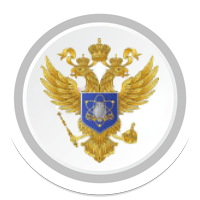
Ministry of Science and Higher Education, Russia
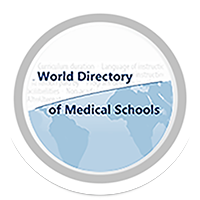
World Directory of Medical Schools (WDOMS)
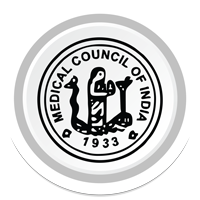
Medical Council of India (MCI)
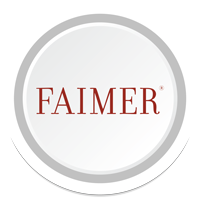
Foundation for Advancement of International Medical Education and Research (FAIMER)
To get admission to the MBBS Program of Pirogov Medical University, the student must qualify NEET-UG (National Eligibility cum Entrance Test-Undergraduate).
Besides NEET-UG, there is no requirement to go through any additional entrance examination.
RUS EDUCATION SUPPORT

INDIAN FOOD
MODERN CLASSROOMS
Medical Laboratories
Clinical Training
Recreational Facilities
Ensured Safety
FMGE (Foreign Medical Graduates Examination) Preparation
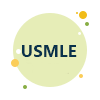
USMLE (United States Medical Licensing Examination) Preparation

- Pirogov Medical University was founded in 1906 in the Moscow city of Russia.
- In 1930, Pirogov Medical University organized the World’s first pediatric faculty.
- In 1963, Pirogov Medical University organized the World’s first biomedical faculty.
- In 2010, Pirogov Medical University received the status of National Research University.
- Presently, more than 8,000 students are studying at Pirogov Medical University, out of which about 700 are international students.
University Address
Mbbs program, admission & support, medical licensing examination support, student life.
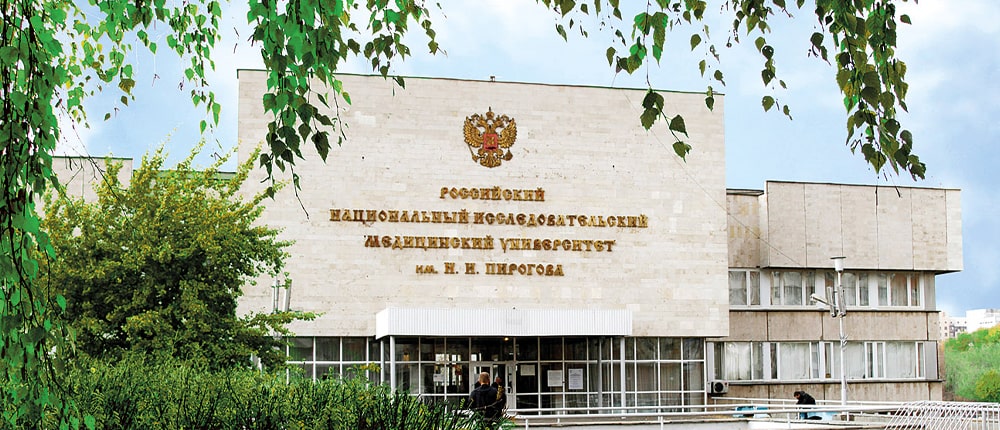
Founded in 1906 in the city of Moscow, Pirogov Medical University—officially known as Russian National Research Medical University named after N. I. Pirogov— is one of the oldest medical universities in Russia. The first lecture took place on September 26, 1906, with 206 students, and the first graduation ceremony was celebrated in 1912.
Focused on constantly improving the quality of education, the University entered the list of Times Higher Education World University Rankings and QS World University Rankings in 2019.
The University claims to be the first university in Russia that started offering medical education to women in the Russian Federation. Among all milestones achieved by the University, two most celebrated achievements are that Pirogov Medical University created the world’s first pediatric faculty in 1930 and the world’s first biomedical faculty in 1963.
To provide students and visitors a glimpse into the decades of the glorious history of the University, Museum of the History of Pirogov Medical University was established in 1981, which continues to capture astonishing achievements of the University, its students, and members.
The University maintains a leading position in Russia by actively participating in activities of medical research and healthcare and delivering excellence in medical education and care.
The University independently carries out various research projects in medicine and has received the status of National Research University in 2010. Conducting pre-clinical as well as clinical studies for a better understanding of human diseases, new medicines, and medical devices have been the center of research at Pirogov Medical University.
To keep the students and healthcare professionals updated on the latest research and innovations in medicine, the University publishes its own scientific journal with articles on biomedical sciences and clinical medicine.
The Library of Pirogov Medical University has a collection of more than 7,50,000 books. Students can also access scientific journals and eBooks through the electronic library system. In collaboration with other universities, academic mobility and exchange programs are also arranged for students to help them get experience in other institutions and build new connections.
For the healthcare of locals, the University operates clinical centers in Moscow. Students are provided hands-on clinical training in these University-operated clinics and also involved in various clinical studies. For world-class training and diverse practical exposure, the University collaborates with more 120 hospitals across the city of Moscow.
Pirogov Medical University started accepting international students in 1959. Until now, the University has trained more than 80,000 doctors. Presently, more than 8,000 students are studying medicine at the University, out of which about 700 are international students. The University has a strong team of about 2,000 faculty members.
Pirogov Medical University is listed in the World Directory of Medical Schools (WDOMS) and certified by the Educational Commission for Foreign Medical Graduates (ECFMG), United States of America. Pirogov Medical University is also approved by the Medical Council of Canada (MCC) and the Medical Council of India (MCI). The University offers a 6-Year Program for MBBS in Russia for local as well as international medical aspirants. Students in India, who have qualified NEET, can apply for direct admission to the MBBS Program of Pirogov Medical University.

Pirogov Medical University Faculty of Medicine 1 Ostrovityanov Str Moscow, 117997 Russian Federation
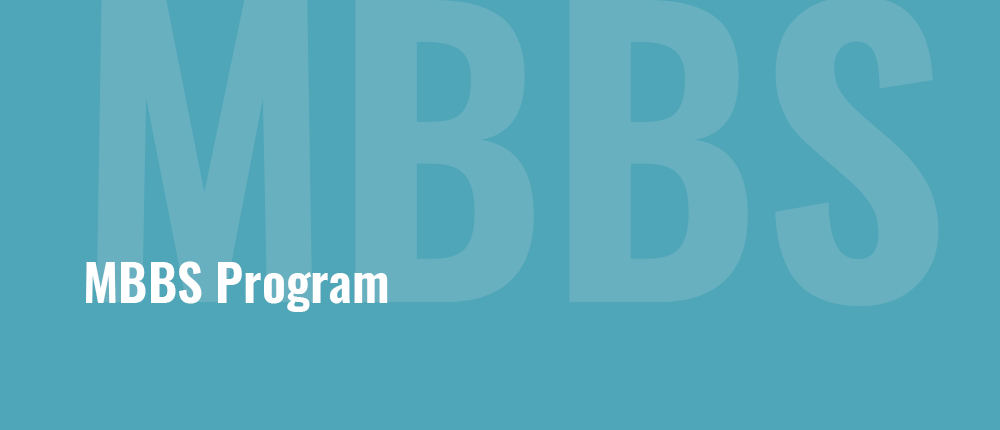
Pirogov Medical University offers a 6-Year MBBS Program in the Russian language. For international students, classes for initial years may be organized in English medium.
The Program for MBBS in Russia is focused on building a strong academic base with a pragmatic approach to education and medical research. To provide hands-on clinical experience, the students studying MBBS in Russia are involved in clinical training from the second year of MBBS. While education in classrooms and laboratories helps the students develop academic skills and sound theoretical understanding, clinical training in University-affiliated hospitals help them apply their knowledge into practice.
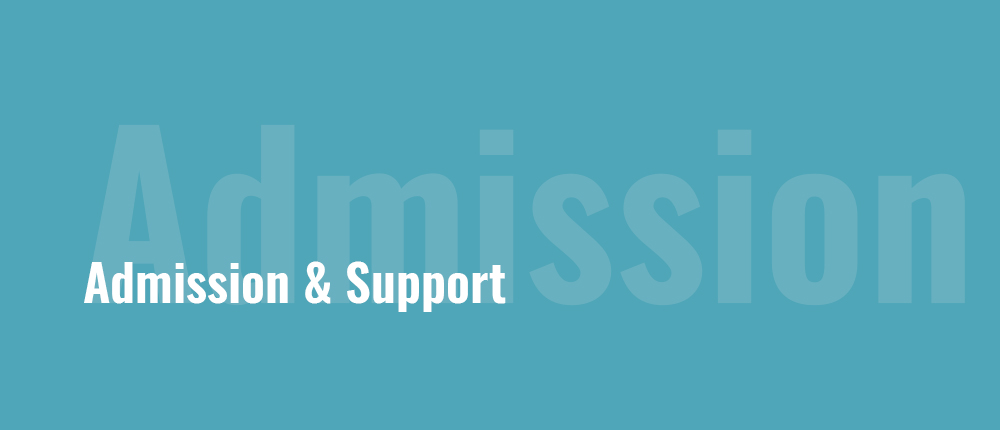
To get admission to the MBBS Program of Pirogov Medical University, you can apply online at Rus Education website.
Rus Education is duly authorized by the Russian Centre for Science and Culture (Cultural Department of The Embassy of the Russian Federation in India) to promote Russian Education among Indian Citizens. Rus Education is also an authorized associate of Pirogov Medical University. We facilitate one-window admission to the MBBS Program of Pirogov Medical University with no requirement of any donation or capitation and without any entrance examination.
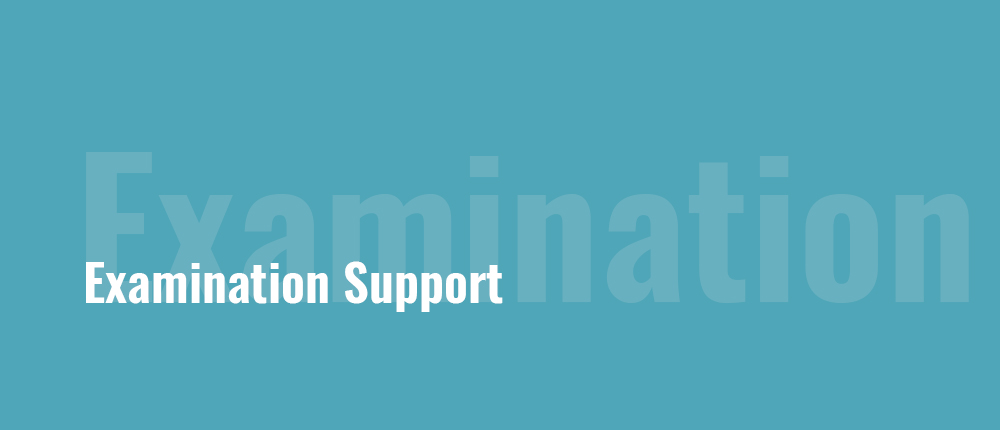
Pirogov Medical University offers a healthy student life and an opportunity to experience life in Moscow, the capital city of Russia, and also the most vibrant and exciting location in the largest country in the world!
For affordable accommodation of students and make their living experience safe and better, the University maintains a comfortable dormitory. Every room is shared by two or three students, and each floor has a shared kitchen where students can cook their food. Members of the dormitory help the newcomers to settle in their new homes. For the safety of the students, the University’s security team maintains 24-hour surveillance and is capable of providing emergency response, if required.
To help students adjust to life at university, it has a dedicated Student Support System in place. Every group of new students is assigned to two professors who guide the students not only about studying but about living as well, helping students adjust to the new environment and feel comfortable.
To keep students fit and active, Sports Center on the campus is equipped with facilities to play various sports, including badminton, basketball, volleyball, table tennis, swimming, football, hockey, chess, etc. Student can unleash their creativity by indulging in extracurricular adventures offered by Student Organizations and Societies. On the campus, there are ample opportunities for self-improvement and taking part in music, dance, sports competitions, and theater.
For peer support, the University has a Student Council in place which offers support in academic as well as non-academic matters making student life stress free.
For the social upliftment and help students connect with the society and local people, they are involved in community and welfare organized by the University, including medical outreach, health awareness programs, and blood donation camps. The University Volunteer Center organizes a number of volunteer activities to help students contribute to social causes.
Living in Moscow, students can explore its cultural heritage, museums, historic buildings, the world-famous Alexander Garden, and much more. For traveling in Moscow, students don’t face any problems, thanks to its convenient and cheap transportation system, especially the Moscow Metro.
With the charm of Moscow and all the student facilities and support services offered by the University, student life at Pirogov Medical University is a delight.
TOP MEDICAL UNIVERSITIES IN RUSSIA
.jpg)
Perm State Medical University
.jpg)
Tver State Medical University
.jpg)
Orenburg State Medical University
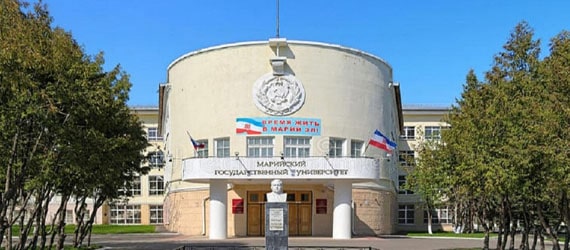
Mari State University
.jpg)
Siberian State Medical University
A php error was encountered.
Severity: Notice
Message: Undefined variable: countries
Filename: includes/footer.php
Line Number: 26
File: /home/mbbsinrussia/public_html/application/views/includes/footer.php Line: 26 Function: _error_handler
File: /home/mbbsinrussia/public_html/application/controllers/University.php Line: 46 Function: view
File: /home/mbbsinrussia/public_html/index.php Line: 315 Function: require_once
Severity: Warning
Message: Invalid argument supplied for foreach()
Message: Undefined variable: state
Line Number: 44
File: /home/mbbsinrussia/public_html/application/views/includes/footer.php Line: 44 Function: _error_handler
©2024-25 Rus Education.
You are using an outdated browser. Please upgrade your browser to improve your experience. Thanks!

- Campus Life
- Application Guidelines
- Recommendations
- Recent Announcements
- Science Talent Search (STS)
- Siemens Competition
- HS Research Opportunities
Program Information
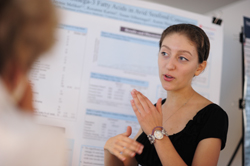
The Simons Summer Research Program is supported by the Simons Foundation. *Students apply while they are currently in their junior year of high school (11th grade)- and participate in the program in the summer before senior year.
Eligibility
Students interested in science who have demonstrated independence, creativity and an aptitude for doing hands-on work are especially encouraged to apply. Applicants must currently be in their junior year (11th grade) of high school at the time of applying ; must be US citizens and/or permanent residents; and must be at least 16 years of age by the start of the program. (no exceptions )
Dates of Program
July 1, 2024 - August 9, 2024
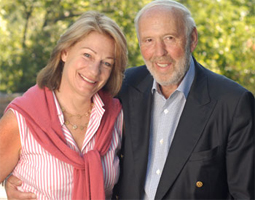
We are grateful for the continued sponsorship of Drs. James & Marilyn Simons and the Simons Foundation.
Related news: read about Dr. Marilyn Simons, honoree at 2019 Stars of Stony Brook Gala, here .
- Housing & Dining

IMAGES
VIDEO
COMMENTS
Welcome! The Simons Summer Research Program gives academically talented, motivated high school students the opportunity to engage in hands-on research in science, math or engineering at Stony Brook University.Simons Fellows work with distinguished faculty mentors, learn laboratory techniques and tools, become part of active research teams, and experience life at a research university.
Be specific about your aspirations and goals for the upcoming summer. Tell us which Simons faculty mentors/research groups (from the 2022 Simons Program Mentor List) are of most interest to you. This is a straightforward question, and hopefully, you already have an idea of what you'd like to say. As the instructions recommend, specificity is ...
Pursuing research at the Simons Summer Research Program - 4 benefits. Of course, the kind of experience you gain is going to help you craft an exceptional essay for your college application - the type that outshines others. But, more importantly, the kind environment and learning that Simons Summer Research program fosters will prove to be extremely enriching.
How to Apply. Dates of Program: JUNE 27 - JULY 29, 2022. For summer 2022, the Simons Summer Research Program will offer TWO options/ tracks for participation: 1) REMOTE. 2) IN-PERSON (COMMUTER) All programming (e.g. faculty talks, closing symposium) will be conducted in a virtual format. *Residential campus housing will NOT be available to ...
Simons Summer Research Program at Stony Brook University. Forms. APPLICATION DEADLINE: FRIDAY, FEBRUARY 10, 2023 (11:59 PM EST) ELIGIBILITY REQUIREMENTS: Applicants must currently be in their junior year (11th grade) of high school at the time of applying; must be US citizens and/or permanent residents; and must be at least 16 years of age by the start of the program.
2. Access to State-of-the-Art Facilities. Another compelling reason why you should apply for the Simons Summer Research Program is the access to modern labs and facilities. These places are equipped with the latest technology and tools, enabling you to do advanced research, which is often impossible in high school.
Texas Tech - Clark Scholars Program. DEADLINE: 2/22/2019. Essays: Two 500-word essays. Prompts: Research Rationale: Describe your primary interest, being very specific; this will help with matching you to a research professor. (Optional - describe your secondary interest, being very specific.) Narrative: Tell the Selection Committee about ...
Simons Summer Research Program at Stony Brook University. Application Guidelines Recommendations. Applicants are responsible for obtaining recommendations from 2 of their high school teachers (math/science or STEM area preferred) and should follow up to ensure that their letters are submitted by the application deadline.
August is a good time because you have the summer to prepare yourself but I think the deadline for it has already passed. Just make sure that your essays demonstrate your passion—I tied in my research experience and how it affected my future goals very specifically in order to demonstrate this. Feel free to ask any question. Good Luck!
With basic information being established, here is a list of reasons why you should apply. 1. The program is prestigious. The Simons Summer Research Program is highly regarded, and the selection process reflects it. Although previous experience is not required, the application is time-intensive, and requires essays, and a school nomination.
Interested applicants must first seek nomination by their high school in order to be eligible to apply to the Simons Summer Research program. Each high school may nominate a maximum of two (2) students (must be in 11th grade) per school.
The Simons Summer Research Program is prestigious and competitive - and its statistics reflect that. Their average acceptance rate is around 5%. This means that you will need to submit a very strong application to be accepted, but it will be very impressive to top-tier colleges when you are. When admissions officers see that you have been ...
Simons Summer Research Program at Stony Brook University. Application Guidelines Recommendations. Applicants are responsible for obtaining recommendations from 2 of their high school teachers (math/science or STEM area preferred) and should follow up to ensure that their letters are submitted by the application deadline: FEBRUARY 10, 2023 (11:59 PM EST)
The SIAM-Simons Undergraduate Summer Research Program will establish five sites across the U.S. for a six-week summer program of research and learning in applied mathematics and computational science. Each site will consist of one faculty member mentoring two students who will learn how to conduct scientific research, effectively communicate mathematics and computational science principles ...
A Simons Program research project is subject to time constraints and will not generally satisfy the more comprehensive eligibility requirements for submissions to science fairs/competitions (e.g. ISEF, Regeneron STS, etc.) unless considerable follow-up work is done on the research project by mutual agreement with their university faculty mentor.
The History of Moscow City. Moscow is the capital and largest city of Russia as well as the. It is also the 4th largest city in the world, and is the first in size among all European cities. Moscow was founded in 1147 by Yuri Dolgoruki, a prince of the region. The town lay on important land and water trade routes, and it grew and prospered.
In 2020 and 2021, the city of Moscow, Russia, has experienced two historical rainfall events that had caused major flooding of small rivers. Based on long-term observation datasets from the surrounding weather stations, regional mesoscale COSMO-CLM climate model results, and a detailed hydrological and water quality monitoring data, we performed a pioneer assessment of climate change and ...
Faculty of Medicine 1 Ostrovityanov Str Moscow, 117997. Russian Federation. Pirogov Medical University offers a 6-Year MBBS Program in the Russian language. For international students, classes for initial years may be organized in English medium. The Program for MBBS in Russia is focused on building a strong academic base with a pragmatic ...
Students can undergo a mandatory annual medical examination at the polyclinic. Diagnostic Medical Center №1, located at ul. Miklouho-Maclay 29 bldg. 2, provides round-the-clock emergency medical care for students living in University dormitory. Emergency phone number: + 7-495-330-80-65 (around the clock).
The Simons Summer Research Program is supported by the Simons Foundation. *Students apply while they are currently in their junior year of high school (11th grade)- and participate in the program in the summer before senior year. Eligibility. Students interested in science who have demonstrated independence, creativity and an aptitude for doing ...